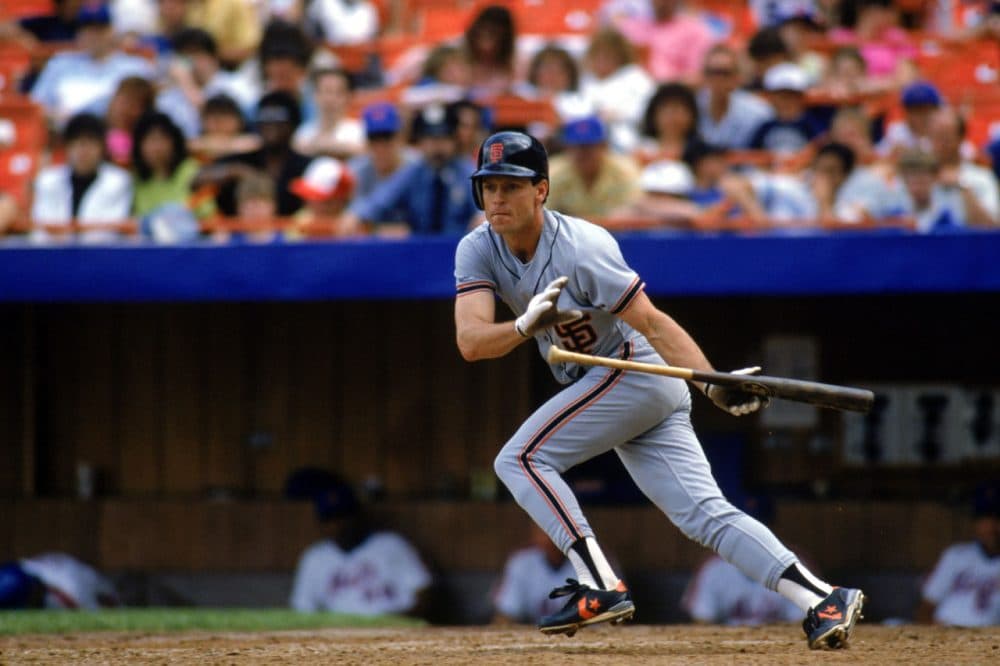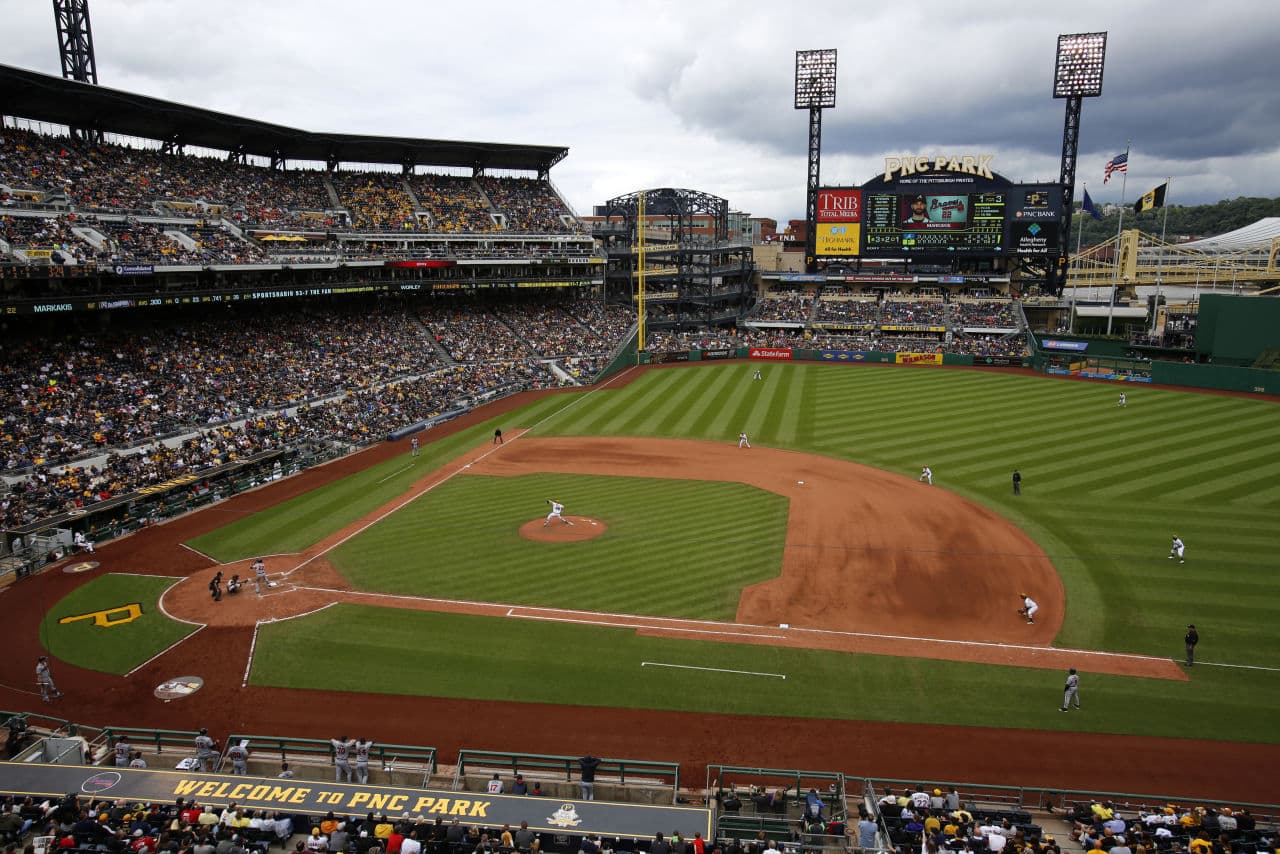Advertisement
Not Dead Yet: The Unpredictable History Of Baseball's Bunt
Resume
The 2016 Major League Baseball season is well into its second month — and if it feels like something's missing this year, that's because something is.
"The bunt, the go-to strategy for traditional managers and reliable friend to many weak-hitting pitchers, died this season in Major League Baseball. It was 122 (or thereabouts)."
Michael Salfino made that declaration last week in the Wall Street Journal — and he's got the stats to back it up.
Today there are half as many bunts — that's when a batter intentionally taps the ball just a few feet from home plate — than there were a decade ago.
"In 2004, you would see a player bunt — a position player bunt — about once every 4.5 games," Salfino says. "Now it's about once every nine games. So on its way to complete irrelevance."
The bunt...died this season in Major League Baseabll. It was 122 (or thereabouts)
Michael Salfino, The Wall Street Journal
Why irrelevance? Logic, Salfino says. For years, managers thought it strategic to sacrifice bunt — which usually meant having the batter bunt so a runner on first could get to second while the batter got thrown out at first.
Not such a sound strategy, say the computers and statisticians.
"Trading an out for advancing the base runner is always a bad trade," Salfino explains.
'The Bunt's Had A Rough History'
The recent attack on the bunt has felt personal to 34-year-old lawyer, law professor and freelance writer Randy Leonard.
"I loved baseball growing up," Leonard says. "But I probably also knew that I wasn't very good. One problem, right? Not having talent. And God bless him, my dad, he loved me, but I think he knew it, too. So at night when we would watch games on TV, we'd watch the Dodgers. And he'd say, 'Watch Brett Butler. Watch how he plays.' And, of course, Brett Butler was one of the game's most prolific bunters, and I just took to his style."
Randy Leonard says he wouldn’t have had a baseball career if it hadn’t been for the bunt. He was fast enough to make it to first before the fielder threw him out, and he bunted through college.
Leonard's baseball career ended a decade ago. But the growing call in recent years to kill the bunt inspired him to look a little more closely at the maneuver.
"The attacks, although different, are not new," Leonard says. "The bunt's had a rough history."
A 'Cheap' And 'Unmanly' Technique
Leonard's research took him all the way back to the 1870s — when the bunt came into play. From the very start, Leonard found, the bunt had detractors.
Even President William Howard Taft ridiculed the bunt, saying he wanted to see players "hit it out for all that is in them."
But around the time Taft said that in 1904, fewer and fewer players were hitting it out — and the bunt was gaining practitioners. That's because the Dead Ball Era was underway.
"They were very cost conscious, so they would use one ball for an entire game," Leonard says. "So the ball, because of the technology, started out not being wound as tight — and then over the course of a game, it being beat up time and again, would get even softer. So when a pitcher was throwing you a baseball it wasn't so much pitching a baseball as it was pitching a misshapen piece of fruit."
Not only that — pitchers were allowed to toss spit balls. And the ballparks were pitcher friendly.
"The fields back then were enormous," Leonard says. "The Chicago Cubs played in a field back whose center field fence was 535 feet from home plate. And players just couldn't hit home runs."
From the turn of the century to 1908, the number of sacrifice bunts nearly doubled.
But Babe Ruth hit 29 home runs in 1919, signaling the end of the Dead Ball Era. What happened to the bunt?
"It's been dying a slow death ever since," Leonard says. "The owners wanted power in the game because they knew fans wanted power in the game. Fences started coming in for that same reason. And then it didn't take a genius to conduct a rough — and it was rough at that time — cost-benefit approach, and they made the realization that. 'Let's take the risk swinging away.'"
'I Looked To Bunt Every Time'
But even as the bunt declined throughout the 20th century, some pro ball players managed to make careers of it.
He yelled at me from the mound, 'Swing the bat! Swing the bat or I'm going to hit you right in the head.'
Brett Butler, former MLB outfielder
"For me, to be quite honest with you, I looked to bunt every time I got up," says Brett Butler.
Remember him? He's the former Dodger whom Randy Leonard watched on TV with his dad.
Butler, who played in the majors from 1981 to 1997, took bunting seriously. Every morning during spring training, he would get to the field early and take 250 practice bunts.
"I was just a small guy. Little guy. Didn't have a whole lot of pop," Butler says. "For me, the goal was to get on base. I was a lead off guy, and, for me, the best way I could do that was to lay down a bunt."
And he did get on base — in 92' Butler led Major League baseball with 42 bunt base hits. Nearly a quarter of all Butler's hits that season were bunts.
But Butler — and the bunt — faced detractors.
"I can remember the first time I faced Nolan Ryan," he says. "And there's a guy, a Hall of Famer that threw almost 100. I remember squaring around and taking a pitch — kind of gauging and seeing what was going on — and he yelled at me from the mound, 'Swing the bat! Swing the bat or I'm going to hit you right in the head.'" Well, again, there's intimidation involved in that. But the reason Nolan did that is that Nolan didn't like to field the bunt."

The Future Of The Bunt
Michael Salfino, the Wall Street Journal's toller of the bell for the bunt, pictures a baseball future in which the bunt and the stolen base, among other tactics on the statisticians’ hit list, are no longer on display.
"I think it's going to be a game that's very pleasing to the mathematically inclined, at least," he says. "But I think the criticism is going to be that the game is too uniform and station-station and pretty much just waiting around for somebody to hit a home run."
But Salfino says there is hope for the bunt.
As the number of statistically minded managers and general managers grows, more strategy changes will come.
High on the list? Defensive shifts that pull the third baseman away from the foul line. That, Salfino says, would open up room for more bunts.
"Numbers killed it," he says. "Maybe numbers can save it, too."
And so the bunt — ridiculed by presidents and Hall of Famers, declared dead in 2016 — may roll on.
This segment aired on May 21, 2016.
